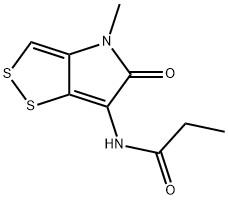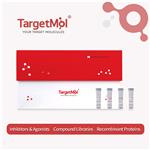Uses
Aureothricin is an antibiotic first described by Umezawa and co-workers in Japan in 1949. Resurgent interest in this class of microbial metabolites was stimulated by the discovery of their selective antitumour activity. Aureothricin is a more hydrophobic analogue of thiolutin, but has received only limited attention. Members of this class, notably thiolutin, are potent inhibitors of bacterial and yeast RNA polymerases, inhibitors of mannan and glucan formation in fungi, and inhibitors of tumour-cell induced angiogenesis in vivo.
Definition
ChEBI: Aureothricin is a dithiolopyrrolone antibiotic that is 4,5-dihydro[1,2]dithiolo[4,3-b]pyrrole in which the hydrogens at positions 4,5 and 6 have been replaced by methyl, oxo and propanoylamino groups, respectively. It is a moderate antimicrobial by-product of the thiolutin fermentation in various Streptomyces species. It has a role as a bacterial metabolite, an angiogenesis inhibitor, an antibacterial agent and an EC 2.7.7.6 (RNA polymerase) inhibitor. It is a dithiolopyrrolone antibiotic and a secondary carboxamide.


